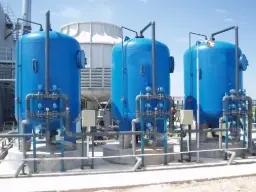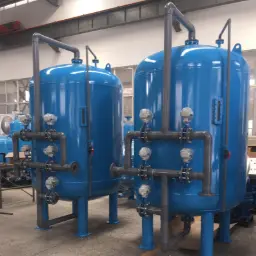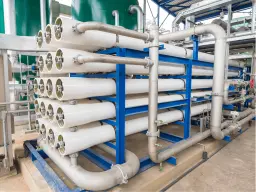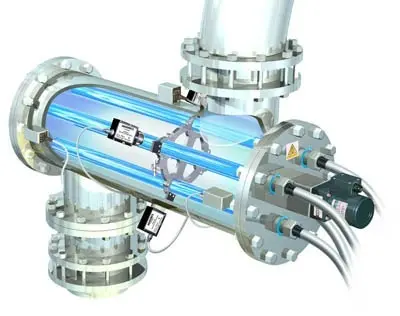Water Treatment for Dairy Processing
The dairy industry stands as one of the cornerstones of the global food and beverage sector, transforming raw milk into an extensive range of products—such as cheese, yogurt, butter, and pasteurized milk—that are consumed by millions daily. Achieving and maintaining top-tier quality in these products relies heavily on the purity and consistency of the water used throughout the production process. From cleaning and sterilizing equipment to pasteurizing milk and managing cleaning-in-place (CIP) protocols, water plays an integral role at every stage. In fact, even minor impurities or microbial contamination in process water can compromise product safety, alter flavor profiles, and lead to potential recalls, thereby undermining brand reputation and consumer trust.
As consumer demand for dairy products continues to rise worldwide, regulatory bodies like the U.S. Food and Drug Administration (FDA), the European Food Safety Authority (EFSA), and various international organizations have established stringent quality standards. These guidelines underscore the necessity for reliable water treatment systems that can consistently remove physical, chemical, and biological contaminants. Moreover, sustainability has become an increasingly central concern within dairy processing. Efficient water treatment strategies not only help conserve resources by facilitating water reuse and minimizing waste but also reduce energy consumption and operational costs in the long run. By integrating advanced water treatment technologies, dairy producers can safeguard their product lines, ensure compliance with evolving regulations, and protect both the environment and public health. In essence, water treatment is more than just a supporting process—it is a critical foundation upon which the success of the modern dairy industry depends.
Related Products for Dairy Processing Applications

Water Softener
Reduces hardness (calcium and magnesium) to prevent scale buildup on heat exchangers, pasteurizers, and other equipment.

Activated Carbon Filtration
Eliminates chlorine, organic compounds, and odor-causing substances, ensuring that water is free from taste and smell issues.

Reverse Osmosis (RO)
Uses semipermeable membranes to remove dissolved impurities, ensuring high-purity water for boiler feed.

UV Disinfection
Inactivates microorganisms by damaging their DNA, offering a chemical-free solution for microbial control.
Applications of Dairy Water Treatment
Water treatment plays a multifaceted role in the dairy industry, supporting a variety of essential operations. One key application is in equipment cleaning and sanitization, where high-quality water is crucial to remove residual milk solids and prevent bacterial growth. CIP systems, for instance, rely on water that is free from hardness and organic contaminants, thereby ensuring that pipes, tanks, and valves remain free from scale, corrosion, and microbial films. Another vital application is in heat exchange processes, such as pasteurization, where fouling caused by mineral deposits can significantly reduce energy efficiency and compromise temperature control.
In addition to these primary uses, many dairy plants incorporate water directly into their products, particularly in the case of reconstituted milk powders or certain dairy beverages. Here, the absence of off-flavors and impurities is paramount for preserving product taste and consistency. Cooling systems also depend on properly treated water to avoid corrosion and prolong the lifespan of cooling towers and condensers. Ultimately, by leveraging robust water treatment systems across multiple points of operation, dairy facilities can optimize production output, enhance food safety, and reduce long-term operating costs.
Advantages of Dairy Water Treatment
Implementing advanced water treatment solutions in dairy facilities yields multiple advantages. First, it substantially reduces the risk of contamination by removing pathogens, chemicals, and other impurities that could compromise product safety. This leads to higher consumer confidence and aligns with strict international regulations. Second, by mitigating issues like scale and biofilm buildup, water treatment extends equipment lifespan, reduces the need for frequent maintenance, and lowers energy consumption. Over time, these cost savings can have a noticeable impact on a plant’s profitability.
Moreover, high-quality water ensures that the flavor and nutritional integrity of dairy products remain uncompromised, fostering brand loyalty and repeat business. The process also supports sustainable practices, as treating water for reuse can lessen the overall demand for fresh water sources, a particularly important benefit in regions facing water scarcity. Ultimately, a well-designed and carefully managed water treatment infrastructure is an investment that yields dividends in product quality, operational efficiency, regulatory compliance, and environmental stewardship.
Challenges and Solutions
Despite these clear benefits, dairy water treatment does come with certain challenges. Energy consumption, for instance, can be significant—especially in systems relying heavily on reverse osmosis. Solutions to this include deploying energy recovery devices or leveraging renewable energy, such as solar power, to reduce the plant’s carbon footprint. Fouling and scaling are recurring issues, which necessitate thorough pre-treatment steps—like ultrafiltration and antiscalant dosing—to protect RO membranes and other sensitive components.
Another concern is the management of wastewater streams, which can contain organic byproducts and cleaning chemicals. Advanced wastewater treatment processes—ranging from aerobic and anaerobic digestion to membrane bioreactors—can help manage these effluents responsibly, allowing for water reuse or safe discharge. By pairing these strategies with ongoing monitoring and control, dairy plants can effectively address the primary hurdles in water treatment, ensuring consistent, high-quality process water for all production activities.
FAQs
Q1: Why is water treatment so crucial in dairy processing?
A1: Even small amounts of impurities can lead to product spoilage, equipment damage, and health risks. High-quality water upholds both product safety and operational efficiency.
Q2: Can water treatment systems be customized for specific dairy products?
A2: Absolutely. The choice of filtration, disinfection, and chemical dosing often depends on the unique needs of each facility, product line, and water source characteristics.
Q3: How often should water treatment systems undergo maintenance?
A3: Maintenance intervals vary based on production volume and feedwater quality. Many plants conduct scheduled inspections weekly or monthly, alongside routine filter or membrane replacements.
Q4: Is treated wastewater suitable for reuse within the plant?
A4: Yes, with the right wastewater treatment technologies, many dairy plants recycle water for non-potable uses like cleaning or cooling, reducing overall water consumption.
Q5: Do energy concerns overshadow the benefits of using advanced water treatment?
A5: While energy usage can be substantial, modern innovations—such as energy recovery devices and renewable power integration—often yield cost and sustainability advantages that outweigh initial concerns.